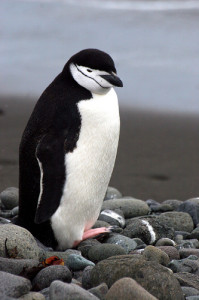This article will guide you to learn some of the most amazing chinstrap penguin facts for kids. The Chinstrap Penguin belongs to the family of Pygoscelis antarcticus and is generally found in Antarctica and sub-Antarctic region. A black lineage crossing its neck makes these penguins stand out among other species. Because of this physical feature, they can be easily identifiable. Ringed Penguins and Bearded Penguins are the other names of these penguins.
Chinstrap Penguin Facts For Kids
- These flightless birds are 68 cm (27 inches) long.
- The weight of these species is around 6 kg (13.2 lbs).
- Females are slightly shorter and lighter in comparison to the males. During the breeding cycle, the weight of the females is normally lower down to 3 kg (6.6 lbs).
- The flippers’ undersides are white, together with a black bill.
- They can swim up to 80 km (50 miles) each day.
- Unlike other species, chinstrap penguins are believed to be the aggressive birds.
What Do Chinstrap Penguin Eat
The study of chinstrap penguin facts shows that these species predominantly feed on small fish, krill, shrimp, and crustaceans. They are also know to eat crabs and meat.
Where Do Chinstrap Penguins Live
These types of penguins exist in South Georgia, Bouvet Island, barren Islands, Antarctic Peninsula, Balleny, and South Shetland. These birds have an average lifespan of 15 – 20 years. These penguins build their nests on a hard snow-free ground, rocky slopes, headlands, foreshores. The nests have a diameter of 15 inches. Leopard seal is one of the notable predators of these birds. Some birds such as Brown Skua are known to snatch eggs of these penguins.

Chinstrap Penguin Facts about its Reproduction
- These types of penguins require a dry land to build their nests.
- The females normally lay 2 eggs.
- Both parents are responsible for incubating (keeping warm) eggs after an interval of 5 – 6 days.
- The young penguins fledge out after 32 – 38 days. However, they remain with their parents for 22 – 32 days.
- The hatching period lasts for 2 – 3 weeks.
- These species are normally found in large colonies comprising more than 12 million birds.
- There are about 6 – 7 million breeding pairs of chinstrap penguins.

Leave a Reply